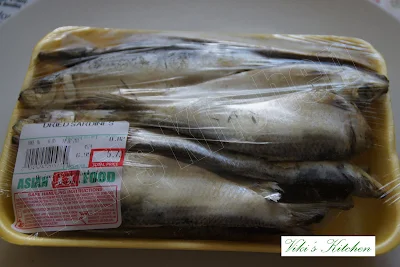Last week (Sep 10, 2011) we had an International festival in our Church after Mother Mary's Birthday (Sep 8). Groups were made according to their ancestry. The theme was to make some educational displays and explain them to the public, dance, auction, stage performances and most importantly a buffet dinner:) Many Indians put a lot of effort on making it successful. I couldn't do much with hubby's schedule, so limited myself with food preparation alone. As a food blogger I wanted to make some Indian dishes with some historic importance. So I chose for me 'Mogul influence on Indian cuisine' and prepared '
Chicken sheekh Kebab and
Kashmiri Pulav' to suit everyone's palette. We were instructed to bring one tray of chicken dish in dry state and another big tray of rice. My friends had brought fried chicken, mint chicken, Rava kesari, Sheera,fried rice, capsicum rice, butter chicken etc. One Indian family had to bring the food warmer set-up.
I calculated the quantity of rice as if everyone (600 people and I have to cater some 80 plate) takes a tbsp of Indian rice and there was nearly 6 trays of rice. So I had to make for some 80 - 100 tbsp or little more than that, as a few can't take foreign food.
I took 8 cups of rice and made that pulav with equal amounts of nuts, dry fruits and fresh fruits.
I made kebabs out of 4 lb chicken and I got 48 pieces totally (which was cut into half while serving). Making Sheekh kebab was not that difficult as I expected , as hubby dear helped me lifting those heavy baking trays which I find tiresome always.
But I was expecting a challenge in cooking rice. I wanted to make them super fluffy and grainy as that of the restaurant pilaf and was looking for good ways to cook fluffy rice. Then I found in a website '
how to cook perfect rice for pulav' and I am much thankful to that person. Though that is a simple post, I should thank the author enough, because that made my pulav adorable (I will publish the pictures soon). I used all the tips and added a few to make it fast.
I started cooking the rice by 7 Am and finished both the dishes by 1 pm.
The buffet was from 5.30 Pm to 11 Pm (Anyways finally they wanted some one to stand along with the food to serve/ guide/ explain...and I happily enjoyed my role there for 2 hours answering their questions and analyzing the American views on Indian foods).They preferred the non spicy foods and many wanted to try newer dishes. They were looking for some authentic Indian foods. I was amazed at their knowledge on Indian cuisine and I noted down the name of the dishes. I will try to make a few dishes as per their suggestion next year. Then the ladies were more interested in knowing about our Indian salwar kameez and jewels :)
Hubby and myself thoroughly enjoyed the day and tasted many dishes from SriLanka, Philippines, Kenya, England, France USA.
Here is the step by step instruction for cooking the perfect rice and few tips on party planning:
1. Calculate 1/2 cup or 100 gm of uncooked rice for each person for a homely party while 2 tbsp of cooked rice will be enough for pot luck (as there will be more food from your friends too).
2. Select a long grain basmati rice for pulav/pilaf/pulao. Short grain Jeeraga samba for Tamilnadu biriyanis. Raw rice / pacharisi / sona masoori for all the variety rice like tamarind rice, lemon rice etc. Ponni puzhungal arisi or sona masoori pacharisi for sambar rice.
3.Plan ahead and write down the procedure with steps to avoid last minute confusions. Measure the required rice and keep closed the day before.
4.Start cooking as early as possible. Desserts can be made days ahead and refrigerated. But rice and non-veg SHOULD be cooked on the same day.
5. Wash the rice in cold water till it runs clear or 3 times.
6. Soak it in large quantity of cold water for 30 minutes to 1 hour. More time than that or hot water soaking will break the rice.
7. Bring 6 cups of water to boil for 2 cups of rice. Add 1/2 tsp salt,juice from 1/4 lemon, 1 tsp butter / oil.If making a colorful pulav, add the turmeric powder for yellow color and other organic food colors at this stage.
Now add the soaked rice (without any water) and cook till it is 80% done.
The rice should be long and stiff but if you bite it it should not be raw. 2 cups of rice will be done in 4-5 minutes after boiling.
**If preparing the
hyderabadi vegetable biriyani or
hyderabadi chicken biriyani, follow everything above...but cook the rice 50% (check for a little raw taste after cooking) and it will be perfectly done with layering**.
8.We should have a rice drainer or a
big size colander (vadi katti). Place the colander over a vessel and immediately pour the cooked rice over it. After the water is almost drained (less than a minute). Discard the water or save it for cattle:)
9. Now bring the colander under running water or pour some cold water above the cooked rice and wash away the sticky carbohydrate. Anyways it is not how I cook for everyday, but since its a party , we have to present the rice in an ornamental way.
10.Keep the rice aside and wait till all the water drains. (The original post says to keep for hours. But I kept for 10 minutes).
11.Spread the rice in a large plate or very large mixing bowl. Let it cool. Don't mix or add anything in warm condition. In big scale production, I have seen the chefs keeping the rice over a new and clean white dhothi (veshti).
12.Once it is cool, add the required mixing or do the layering to get your pulav or biriyani.
Tips:
*Always write down the name of the dish and ingredients list and stick near the tray for a large gathering like this, as it will help many to taste other national cuisine without hesitation.
Hope I have mentioned all the tricks I used to make the pulav as I got many requests on this fluffy rice finish and of-course for the recipe too :)
Wishing you all a very happy weekend and enjoy making restaurant quality pulavs at home:)















































